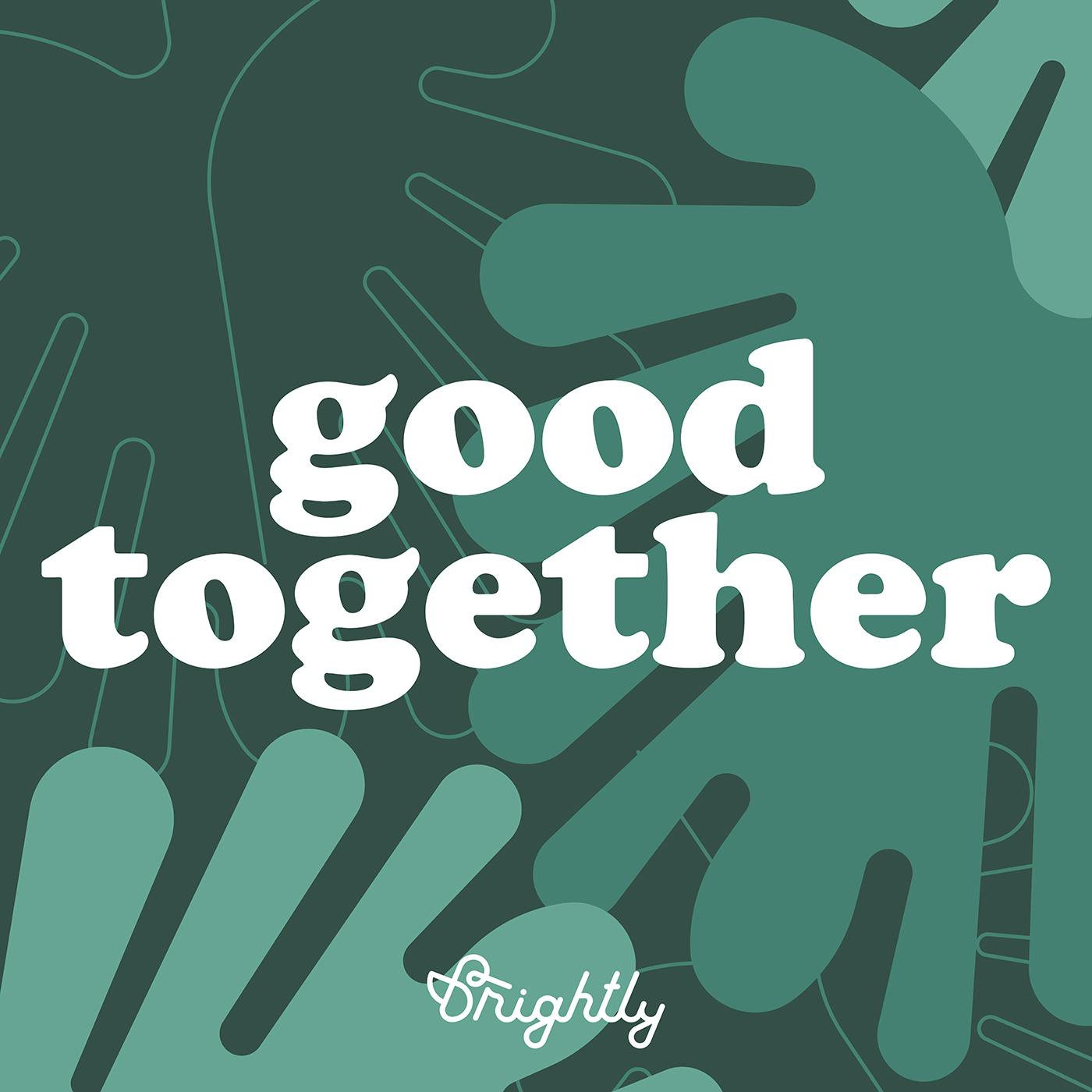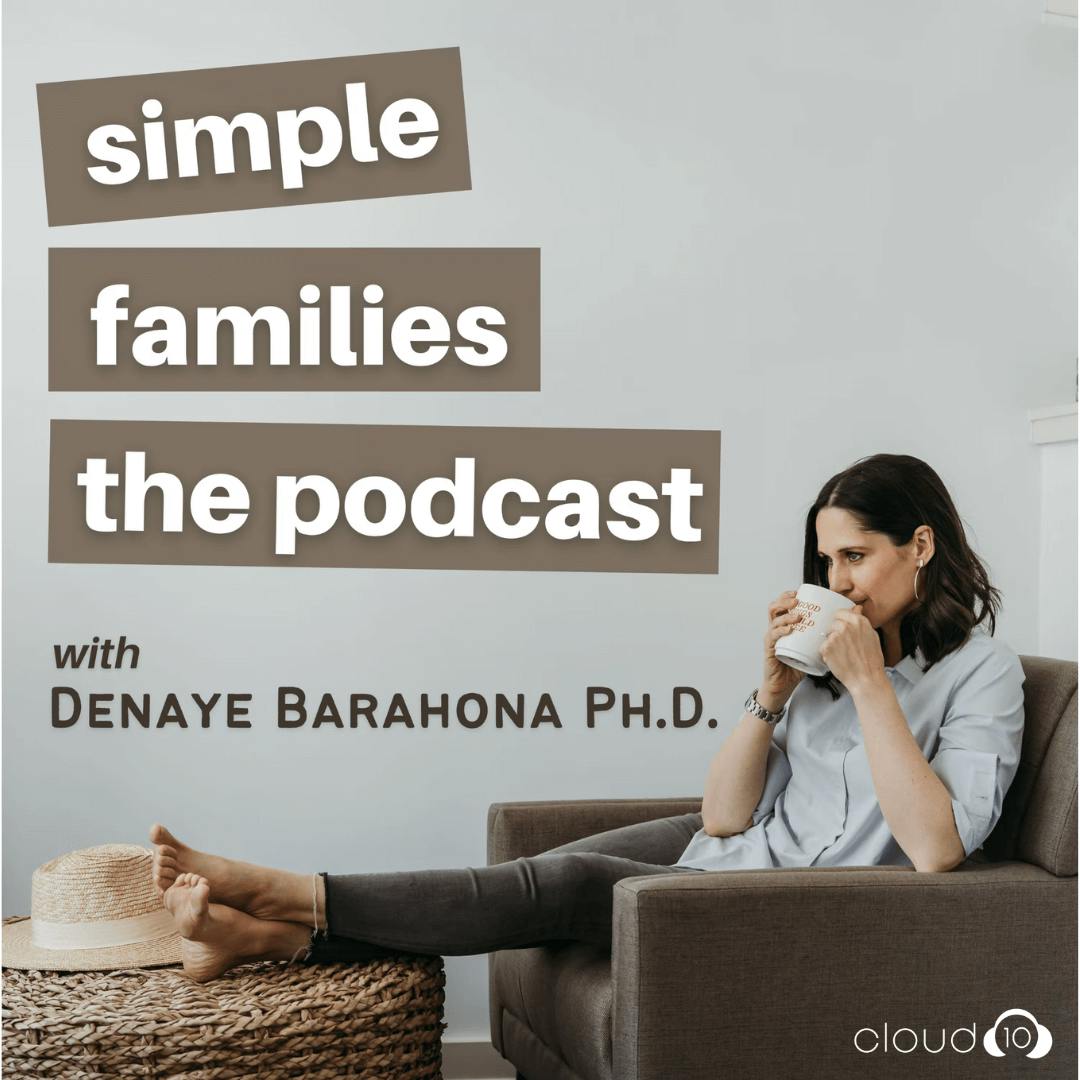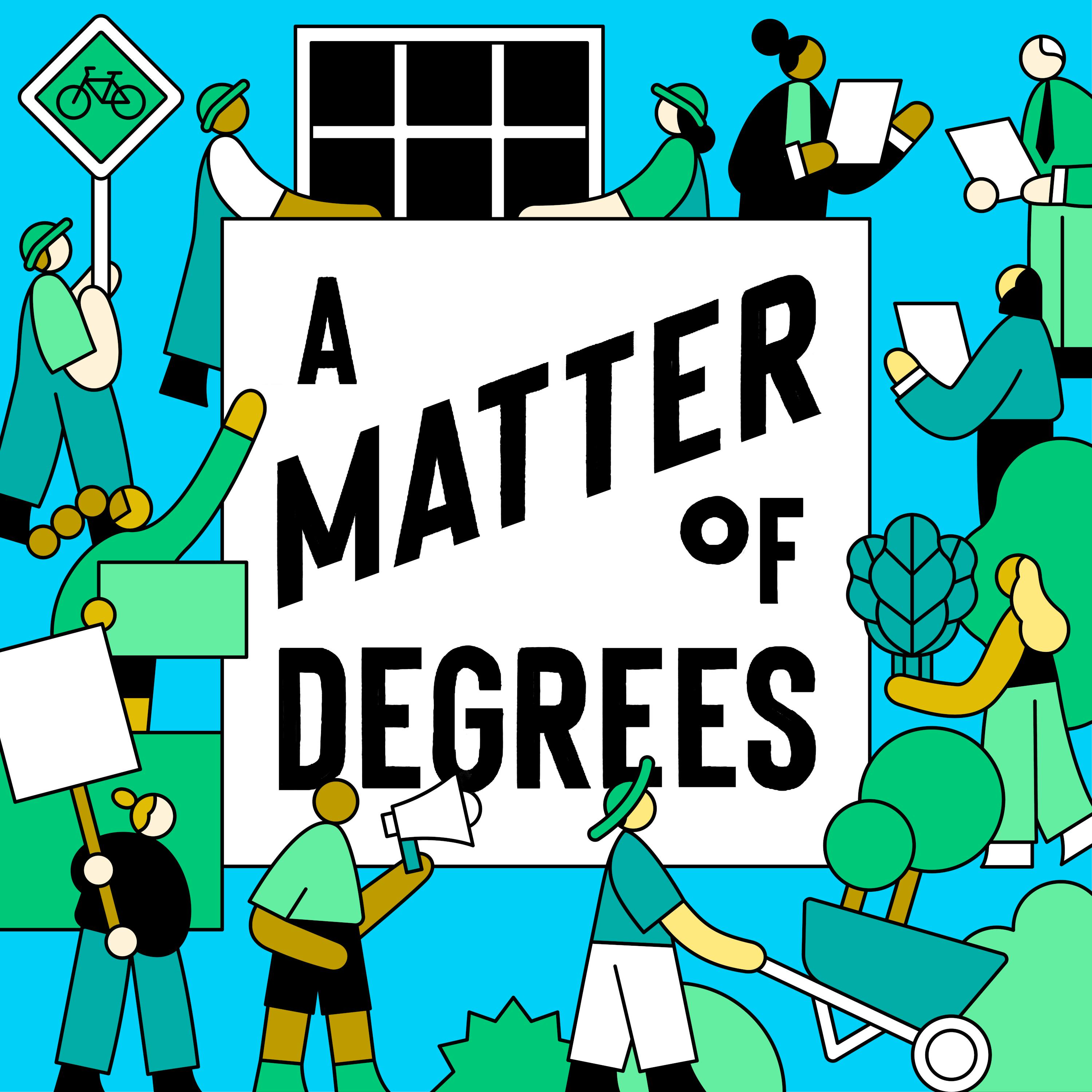
Sustainable in the Suburbs
Want to waste less, save more, and make your home a little more eco-friendly? Sustainable in the Suburbs is your go-to podcast for practical, judgment-free tips and real-life stories to help you build sustainable habits that actually stick.
Hosted by Sarah Robertson-Barnes — a suburban soccer mum, sustainability educator, and founder of the blog Sustainable in the Suburbs — this weekly show brings doable advice, honest conversations, and actionable ideas to help you waste less, spend smarter, and live more sustainably at home.
Because sustainable living doesn’t have to be perfect to matter — and you don’t have to do it all to make a big impact.
Start where you are, use what you have, and live a little greener.
Sustainable in the Suburbs
21: Zero Waste Halloween — Eco-Friendly Tips for Costumes, Candy, and Pumpkins
Halloween is supposed to be spooky, but the real horror might just be the mountain of waste it leaves behind. Costumes that only last one night, piles of plastic candy wrappers, cheap décor that lasts one season, and millions of pumpkins sent straight to landfill. It’s expensive and wasteful — but it doesn’t have to be that way.
In this episode of Sustainable in the Suburbs, I’m sharing how to celebrate Halloween in a way that’s festive, affordable, and low waste. You’ll hear ideas for costumes, candy, decorations, and pumpkins that cut back on trash while still keeping the spirit of Halloween. And as always, it’s about picking what feels doable for you — practical, budget-friendly shifts that reduce waste without losing what you love about the season.
Takeaways
- How Halloween has become one of the most wasteful (and expensive!) holidays of the year.
- Costume ideas to save money and reduce waste
- How to hand out treats without all the plastic.
- Eco-friendly décor tips and why you should skip fake spider webs.
- What to do with your pumpkins after Halloween
Resources
Zero Waste Halloween (blog post)
What to Do With Your Pumpkin After Halloween (blog post)
Seasonal Decor - Making a Trash Pumpkin (blog post)
Ethical Candy to Try This Halloween (Fairtrade America)
Pumpkin Parades (City of Toronto)
TerraCycle - Halloween Treat Wrappers
Connect With Me
Sustainable in the Suburbs is mixed and edited by Cardinal Studio
If you enjoyed this episode, I’d love it if you followed the show, shared it with a friend, or left a rating and review. Every little bit helps more people find Sustainable in the Suburbs — and live a little greener.
Halloween is supposed to be scary, but the real horror? The mountain of plastic costumes, candy wrappers, and pumpkins headed for landfill. Here's how to celebrate the season without spending a fortune or creating all that waste. Welcome to Sustainable in the Suburbs, a podcast for the eco-curious who want to live a greener life and are looking for a place to start. I'm your host, Sarah Robertson Barnes, a soccer mom with a station wagon and a passion for sustainable living. Each week I'll bring you practical tips and honest conversations to help you waste less, save money and make small doable shifts that actually fit your real life. Because sustainable living doesn't have to be perfect to matter and you don't have to do it all to make a difference. Hello and welcome back to Sustainable in the Suburbs, the podcast where we start where we are, use what we have and live a little greener. My name is Sarah and thank you for spending a little time with me today. Just a few housekeeping notes before we get started. Sustainable in the Suburbs is a listener supported show and it truly grows through word of mouth. So if you'd like to support it, you can share an episode with a friend or post it on social media where you can also come hang out with me. I'm on most things at Sarah Robertson Barnes. You can subscribe to the show and leave a rating or a review that really helps more people find us. And as we're heading into the holiday season, I will have a zillion tips for you. to reduce waste and save money. So make sure that you are subscribed to my newsletter. And the link for that is down in the show notes. Your support really keeps this community going and I'm so glad you're part of it. It is now officially fall, which means that Halloween is right around the corner. And if your neighborhood is anything like mine, the decorations are out and the costumes and candy have already taken over the stores. Actually, I saw Step Out in Home Sense in July, but I digress. Anyway, it's a really fun time of year, but it also comes with a lot of extra stuff. Halloween is spooky enough already without the graveyard of waste it leaves behind, costumes that fall apart after one night, piles of plastic candy wrappers, and pumpkins that go straight from the porch to the landfill. It all adds up to a lot of money spent and a lot of trash created for just a few hours of fun before its untimely death. But here's the good news. No, I will not stop making the buns. You do not have to give up Halloween to make it a little greener. You can still enjoy the costumes, the candy, the decorations, and all of the fun that comes with it without overspending or creating quite so much waste. Today's episode is all about how to celebrate Halloween in a way that's festive, affordable, and a little more sustainable. We'll look at the three biggest sources of waste, costumes, candy, and decorations. plus what to do with all those pumpkins afterward. And as always, this isn't about doing everything perfectly, just pick and choose the things that feel doable for you and your family. Now, I'm not an expert, but Halloween has its roots in old seasonal festivals, a way of marking the end of the harvest season and the long dark months coming ahead. Many believe that it was or is a night when the worlds of the living and the dead overlap, giving rise to ghost stories and other eerie happenings that we still connect with Halloween today. But like so many other things, somewhere along the way, what began as a folk celebration turned into one of the most commercial holidays of the year. and the spending is massive. According to the National Retail Foundation, Halloween sales in the US are projected to top 13 billion, with a B, dollars this year. That's a record high. That's billions of dollars spent on costumes, candy, and decorations that, for the most part, end up being single use. Costumes alone account for more than $4 billion. So let's think about that. Plastic outfits that rip after one wear. or get shoved to the back of a closet or tossed in the garbage. So that's billions of dollars literally thrown away. Candy is another big expense. Americans spend more than $3 billion on Halloween candy each year, and nearly all of it is wrapped in non-recyclable plastic. Beyond Plastics estimates that 600 million pounds of candy wrappers end up in the trash every Halloween in just the US alone. Not to mention all the resources that go into making the candy in the first place. That's a lot of sugar for a few minutes of enjoyment and centuries in the landfill. It's very scary. And then there are the decorations. So in the U.S. again, more than $3 billion are spent every year on Halloween decor. A lot of it is impulse purchases of cute but cheap plastic at big box stores. I started seeing this stuff on the shelves around here in July and it's just, it's July. It's hard to celebrate the season when you know that all of that plastic and all of that money is destined for the dump. Pumpkins tell the same story. In the U.S., more than one billion pounds of pumpkins end up in landfills each year instead of being eaten or composted. So even though carving pumpkins aren't the tastiest, they are still edible. And when they're composted, they go right back into the soil. When they end up in landfill, all that food waste creates methane, which is a powerful greenhouse gas. So that's again, money that we spend on something decorative that could have fed your family or in the very least fed the soil. So when we look at the big picture, Halloween has become a holiday that's supposed to be fun and carefree, but it leaves behind a haunting environmental price tag and a big dent in our wallets. But here's the good part, the same solutions that cut down on waste will also save you money. So every time you reuse or borrow or get creative with what you already have, you're not just keeping stuff out of the landfill, you're keeping money in your pocket. costumes and dressing up have always been at the heart of Halloween. This tradition goes back centuries where people wore masks or costumes to disguise themselves from wandering spirits, and it later became part of local celebrations and of course the trick-or-treating that we do today. Most store-bought costumes nowadays are made of cheap plastic fibers like polyester, nylon, acrylic sequins, and they're often worn just once, but will be in the landfill forever. On top of that, these cheap costumes are not cheap. Families can spend easily 50 to $100 per child every single year. So multiply that by a couple of kids and you're spending hundreds of dollars on outfits that last for pretty much just one night. The good news is that costumes are one of the easiest places to cut waste and save money. Thrift stores are full of amazing finds starting in early September. Pretty much anything your kid wants to be, you can probably find. The secondhand shops that are just for kids stuff. So here in Ontario, that's like once upon a child, they are really great for this. When my two were younger, they desperately wanted to be transformers. So after a little of hunting, I found an Optimus Prime and Bumblebee costume. And not only was I the best mom of all time, they went out like that three years in a row. If you are a more creative person than me, thrift stores are perfect for making your own costume as well. So think clothing, accessories, and random bits and bobs that you can repurpose into something really creative. A few years ago, my son made a killer pirate costume himself this way, right down to the stuffed parrot toy on his shoulder. Hunting through the racks is half the fun, and it costs a fraction of what you would spend on a brand new plastic outfit that only lasts for one night. Plus you can feel good that you're giving something a second life instead of adding to the cycle of buy, use, toss. You can also make your own. And I don't mean sewing like a full princess gown, unless that's your thing. But a cardboard box becomes a robot. A black hoodie and eyeliner can make a perfect cat. Reusing what you already have around the house is not only low waste and low cost, but it's a really cool chance to get creative together as a family. Kids especially love the DIY approach because they get to help decide and build their own costumes. Another great option for costumes is swapping. So you could host a costume swap with friends, neighbors, or even through your kid's school, the library, or community center. Most kids don't want to wear the same costume year after year, but another child would be thrilled to have it. And don't forget about your local buy nothing group. You can post old costumes and also ask if anyone has something in particular that you're looking for. And finally, consider renting or borrowing, especially for fancy costume parties. So formal wear shops, local theater groups, even some libraries have costume rentals, especially around Halloween. Or just borrow from a friend, adults included, that elaborate witch's hat or vampire cape that your neighbor wore last year is probably gathering dust. And they might be more than happy to lend it out. So just ask. So instead of spending a fortune on plastic costumes that end up in the garbage, try reusing, swapping, thrifting, or getting creative with what you already own. It's better for the planet and it's definitely better for your wallet. Okay, so let's talk about candy. Full disclosure, I do hand out candy. I love it every time the doorbell rings and hearing the kids say trick or treat and checking out all the costumes and the little thank yous before they run away. I just love it. So not handing out candy is not an option for me. What I don't love is that it comes with a lot of waste. Unwrap treats are obviously a no-go for trick-or-treating, so it's a bit of a conundrum. Beyond Plastics estimates that Americans throw away 600 million pounds of single-use candy wrappers every Halloween. That's a lot of plastic for just one night. So what can we do? Well, the first option is simple. Buy less. It's so easy to overestimate how much you'll need and end up with a mountain of leftovers, especially because they come in such huge boxes. Buying more than you need costs money and creates waste. So a little planning and some restraint goes a long way. So speaking of restraint, here is my pro tip. Buy candy that you personally do not like. This way you won't eat it all before Halloween and then end up having to buy even more. This is why you'll get peach fuzzies if you come to my house. Bulk stores also have tons of candy. Unwrapped candy is a good choice for parties, but they also have wrapped candies that you can buy in bulk, making it easier to control how much you're buying and what kind. So this is what I do as well. I buy a candy called Rockets, which I think are called Smarties in the States, but Smarties are a different thing in Canada. ah They come in a recyclable cardboard box. But anyhow, Rockets here in Canada, they are wrapped in plastic, but they're made right down the road. They're local. So there are two confusing options for you, but just some things to keep in mind if you are buying candy in bulk. Another way to reduce a little candy waste is to look for foil-wrapped options. So foil can be collected and then rolled into a ball, both the size of your fist and recycled in many municipal programs. It's not perfect, but it's a step up from plastic that will sit in landfill for centuries. And then when you are deciding what to buy, it's also worth thinking about the chocolate itself. as many sourcing practices harm both people and the planet. So choosing fair trade or ethically sourced chocolate is a small but meaningful way to make sure that your treats don't come at the expense of someone else's wellbeing. There are also quote recycling programs like TerraCycle for wrappers, but I've never really been clear on how exactly they recycle the wrappers. It is more like downcycling, which means that they're making plastic into other plastic that then can't be recycled. So think of something like turning plastic into astroturf or other types of carpeting. It's something you can check out if that interests you. It is something that you pay for directly, meaning that you buy a box, fill it and send it back. And this can work well for your child's classroom or collecting from friends and families. And I'll leave that link in the show notes for you to investigate that option. There are also plenty of non-candy alternatives that kids do love. Pencils, stickers, temporary tattoos, seed packet, cans of pop were legendary when I was a kid, juice boxes or coupons for local activities. So for example, a friend of mine last year gave out tickets for the skating rink to go for the free skate. They don't have to be expensive and they also won't leave behind piles of plastic wrappers. And also, as I mentioned at the top, You don't have to hand out candy. Opting out is okay. My parents have done the go out for dinner, turn the lights off thing for years. And another friend of mine goes out for a hotel night. One of those hotels that has a cool pool with a water slide and all of that kind of thing. So not your parents turning off the lights and pretending you aren't home, but there are options if you're just not into it and you want to opt out and that's okay. Decorating is definitely one of the most fun parts of Halloween, but it's also one of the easiest places to overspend on things we don't really need. Stores start rolling out the cute Halloween slash fall decor in July, months before anyone's even thinking about pumpkins. And every year, billions of dollars are spent on cheap plastic skeletons, tombstones, string lights that barely last a season. They look fun for a few weeks and then they break. or they fall out of fashion or they end up in the landfill. Plus we're more likely to throw something out when it's cheap instead of caring for it and storing it properly. It's a cycle designed to keep us buying more and more year after year and it does add up fast. There are so many better options though. So natural decor like pumpkins, gourds, leaves, dried corn stalks, bales of hay, homemade scarecrows, dead branches, pine cones and so on all look really beautiful and can be composted when you're done. And as a bonus, this natural decor can double as Thanksgiving decorations. So we love a multipurpose and sustainable solution. You can also get creative with DIY projects like making a trash pumpkin, which is exactly what it sounds like. So basically you can turn your household garbage into something that's quirky and reusable. It's a really fun craft to do with your kids or not. And you'll have a unique piece that you can use year over year. So I made one. probably five or six years ago now. And I do have a step-by-step tutorial for you that I will link down in the show notes. I also have a bunch of little pumpkins that I knit and my husband has one that he cut out from a bunch of scrap wood last year. So there's lots of ways that you can get creative and see what happens. Or just reuse the decorations you already own and invest once in durable items that you'll actually enjoy pulling out year over year. If you do want to buy something new, look for it secondhand. Thrift stores are full of decorations this time of year and people are also offloading bigger items on Facebook Marketplace. This is the story of me desperately wanting the giant Home Depot skeleton for a few years now, but I've been waiting to find one second hand and I also have to figure out where to store it. Okay, we do have to talk about the fake spider webs though. I hate them and not just because they are made of single use plastic. Every year, birds and small animals get tangled in them and can't escape. Songbirds are especially at risk during fall migration. Even if wildlife doesn't get caught, those webs are shedding synthetic fibers that end up in nests and in the environment. So they're harmful for animals, for your yard, and for the planet. And if that's not enough, FEMA warns they are also a fire hazard. And veterinarians report that they can cause intestinal issues for cats and dogs if swallowed. So please skip the fake spider webs even indoors. Halloween decorating doesn't have to be complicated or expensive. A few pumpkins on the porch, a handmade wreath or a DIY project with your kids can create just as much atmosphere without the waste, without the cost and without the harm to wildlife. At its heart, Halloween is a celebration of the season itself. The harvest, the turning leaves, the darker evenings and the cycles of nature. You can absolutely lean into that love of the season. but do it in a way that honors what it's really about. Celebrate with natural materials, reuse what you already have, and create traditions that connect you and your family back to the earth. And of course, we can't talk about Halloween without talking about pumpkins. Every year, millions of them are grown, carved, displayed for a few days, and then tossed straight into the garbage. In the US, that's more than 1.5 billion pounds of pumpkins being sent to landfill every year. So you've got this huge amount of harvest in a really water-intensive crop, and then a vast portion of it ends up as waste. Remember that nothing truly breaks down in a landfill, not even food. And pumpkins are food. So if possible, eat your pumpkin. And not just roasting the seeds, although that is an easy snack and I look forward to it every year. The flesh of carving pumpkins while not as sweet as pie pumpkins still works in soups, muffins, or baking. It's kind of like zucchini that way. If you wait to carve your pumpkin until just before the big night and you don't paint or bleach it or whatever, it should be safe to eat. So I end up chopping them into big chunks and then I steam it in the instant pot. puree it, and then I freeze it in muffin tins for easy half-cup portions. So I'll link a few videos and recipes of how I use it down for you in the show notes. And if eating your pumpkin isn't in the cards or you just don't want to, compost your pumpkin. Whether in a backyard compost pile, a municipal green bin, or a community compost drop-off, composting is far better than letting your pumpkin rot in the trash. If local composting isn't an option, get creative with community solutions. Some people collect pumpkins from neighbors and deliver them to farms or animal sanctuaries where they feed livestock. Chicken, goats, and pigs love pumpkins. My old neighborhood in Toronto had another cool community initiative, which is now happening across the city. So every year on November 1st, Sororan Park held the pumpkin parade where people from around the neighborhood would bring their carved pumpkins to the park, light them up one last time, and they all lined the pathways. So folks from the neighborhood... from all kinds of different neighborhoods actually would gather and walk the paths and check out everybody's pumpkins. The city would then collect the pumpkins and compost them. It was a really magical celebration and way to close the loop on the season. So that might be something that you could get going in your town for next year. So rather than letting your pumpkin become an afterthought in November, think of it as part of the seasonal cycle. Eat it, compost it, share it, or light it up one more time with your neighbors. Honor the season and let your pumpkin return to the earth in a way that sustains life. So that's costumes, candy, decoration, and pumpkins, four of the biggest sources of waste at Halloween and also four of the easiest ways to make a change. The big takeaway here is that Halloween can absolutely be fun and low waste. You don't have to spend a fortune or create a mountain of trash to enjoy the season. In fact, the same steps that reduce waste usually save you money too. So borrowing or thrifting a costume, buying a little less candy, skipping the plastic decor. These are all small shifts that keep dollars in your pocket and keep garbage out of the landfill. And remember, you don't have to do it all. Progress over perfection is really what matters. Pick one or two things that feel doable for you this year. Maybe that's making a thrifted or homemade costume, or choosing foil-wrapped or fair trade chocolate. Maybe it's roasting your pumpkin seeds instead of tossing the whole thing. Whatever it is, you're still part of building a Halloween tradition that honors the season without all that waste. Before we wrap up, I want to leave you with one small shift you can try this Halloween. Maybe that's brifting your costume instead of buying something new. Maybe it's buying a little less candy, saving yourself some money and from eating it all. And maybe that's just cooking with your pumpkin and trying the muffin recipe I'm going to leave for you in the show notes. Again, just pick one thing that's doable and let that be your shift this year. Doesn't have to be perfect. Doesn't have to be scary. We'll leave that to the ghosts. so you don't have to spend a fortune or create a lot of waste this year to enjoy Halloween. With a few small shifts, you can celebrate the season in a way that's fun, affordable, and more sustainable. I'll make sure to link all of the resources and blog posts and videos and everything that I mentioned in the show notes for you, including a guide to a zero waste Halloween, ideas for what to do with your pumpkin after October 31st, all that good stuff. You'll also find a link to my newsletter where I'll be sharing even more seasonal tips to help you reduce waste. and save money through the holiday season. Until next time, start where you are, use what you have, and live a little greener. Thanks for tuning in to Sustainable in the Suburbs. Every small step adds up and I'm so glad we're doing this together. If you enjoyed this episode, please make sure to follow the show, share it with a friend and leave a review wherever you get your podcasts. You can find me at sustainableinthesuburbs.com or at Sarah Robertson Barnes on all the things. Until next time, start where you are, use what you have and live a little greener.


![[OLD IMPORT] Green Dreamer: Seeding change towards collective healing, sustainability, regeneration Artwork](https://img.transistor.fm/Cu7NhHL7AkMmLzHdklSCPpCReUYOwJA3MsPaYf0GyVQ/rs:fill:0:0:1/w:1400/h:1400/q:60/mb:500000/aHR0cHM6Ly9pbWct/dXBsb2FkLXByb2R1/Y3Rpb24udHJhbnNp/c3Rvci5mbS9hZWY0/MTZkZjU2NTNmM2Ez/YzFmMjU1ODRhMzRk/YmE3ZC5wbmc.jpg)






